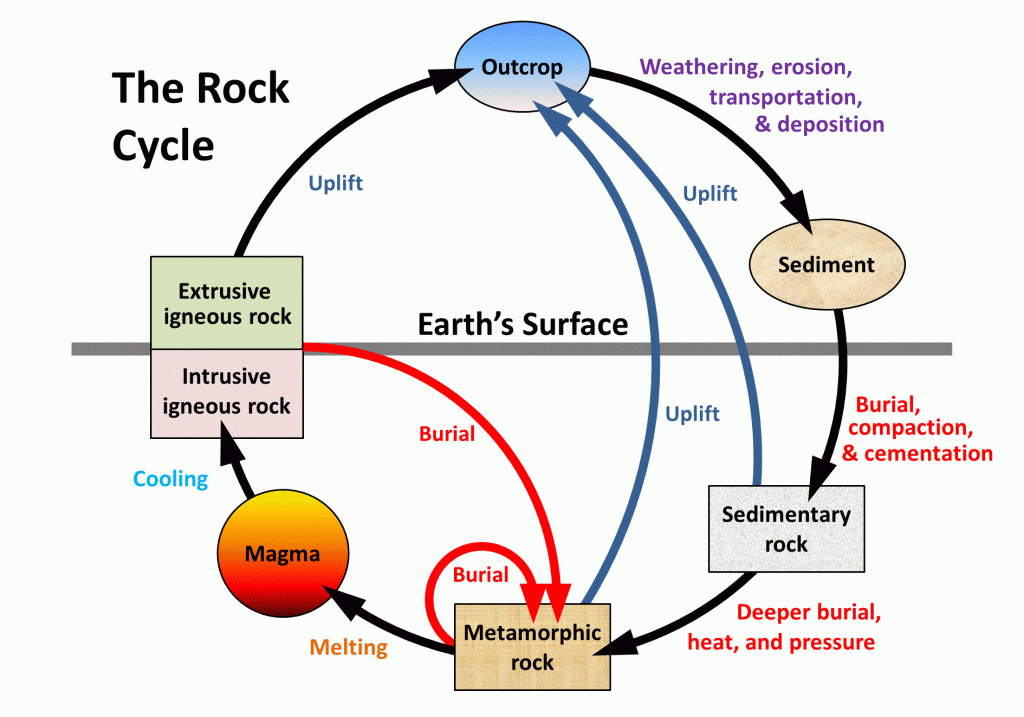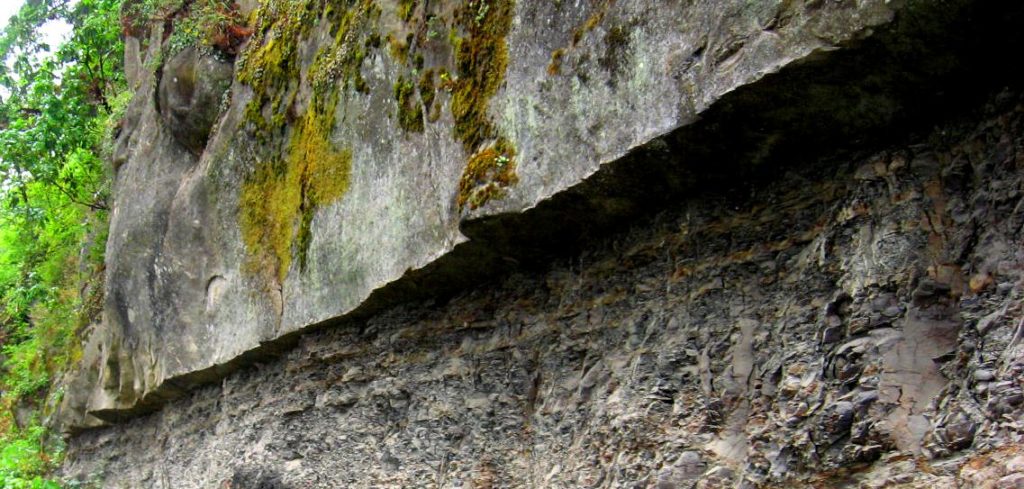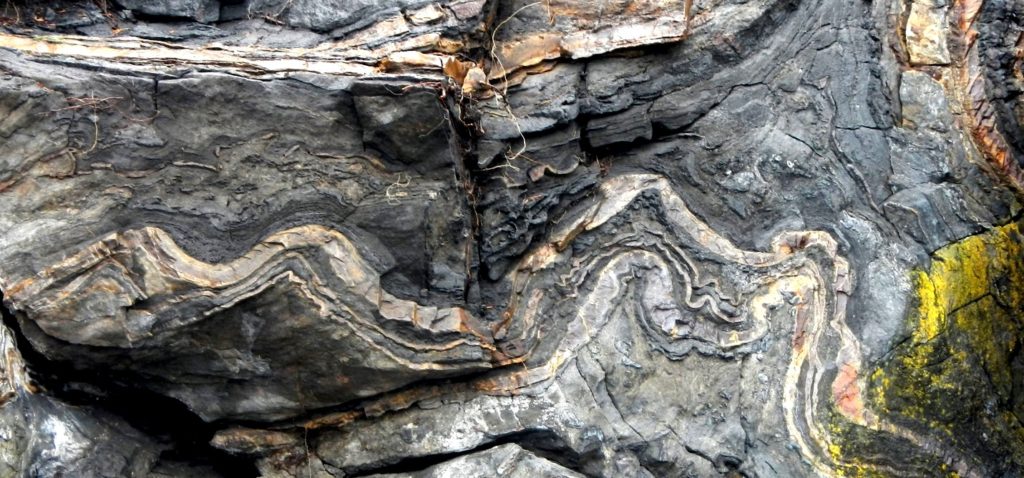27 3.1 The Rock Cycle — Physical Geology – 2nd Edition

In describing the rock cycle, we can start anywhere we like, although it’s convenient to start with magma. As we’ll see in more detail below, magma is rock that is hot to the point of being entirely molten, with a temperature of between about 800° and 1300°C, depending on the composition and the pressure.

Magma can either cool slowly within the crust (over centuries to millions of years)—forming intrusive igneous rock, or erupt onto the surface and cool quickly (within seconds to years)—forming extrusive igneous rock (volcanic rock) (Figure 3.1.2). Intrusive igneous rock typically crystallizes at depths of hundreds of metres to tens of kilometres below the surface. To change its position in the rock cycle, intrusive igneous rock has to be uplifted and then exposed by the erosion of the overlying rocks.
Through the various plate-tectonics-related processes of mountain building, all types of rocks are uplifted and exposed at the surface. Once exposed, they are weathered, both physically (by mechanical breaking of the rock) and chemically (by weathering of the minerals), and the weathering products—mostly small rock and mineral fragments—are eroded, transported, and then deposited as sediments. Transportation and deposition occur through the action of glaciers, streams, waves, wind, and other agents, and sediments are deposited in rivers, lakes, deserts, and the ocean.
Referring to the rock cycle (Figure 3.1.1), list the steps that are necessary to cycle some geological material starting with a sedimentary rock, which then gets converted into a metamorphic rock, and eventually a new sedimentary rock.
A conservative estimate is that each of these steps would take approximately 20 million years (some may be less, others would be more, and some could be much more). How long might it take for this entire process to be completed?
See Appendix 3 for Exercise 3.1 Answers.

Unless they are re-eroded and moved along, sediments will eventually be buried by more sediments. At depths of hundreds of metres or more, they become compressed and cemented into sedimentary rock (See Figure 3.1.3 for example). Again through various means, largely resulting from plate-tectonic forces, different kinds of rocks are either uplifted, to be re-eroded, or buried deeper within the crust where they are heated up, squeezed, and changed into metamorphic rock (Figure 3.1.4)

Image Descriptions
Figure 3.1.1 image description: The rock cycle takes place both above and below the Earth’s surface. The rock deepest beneath the earth’s surface, and under extreme heat and pressure, is metamorphic rock. This metamorphic rock can melt and become magma. When magma cools below the earth’s surface, it becomes “intrusive igneous rock.” If magma cools above the earth’s surface, it is “extrusive igneous rock” and becomes part of the outcrop. The outcrop is subject to weathering and erosion, and can be moved and redeposited around the earth by forces such as water and wind. As the outcrop is eroded, it becomes sediment which can be buried, compacted, and cemented beneath the Earth’s surface to become sedimentary rock. As sedimentary rock gets buried deeper and comes under increased heat and pressure, it returns to its original state as metamorphic rock. Rocks in the rock cycle do not always make a complete loop. It is possible for sedimentary rock to be uplifted back above the Earth’s surface and for intrusive and extrusive igneous rock to be reburied and become metamorphic rock. [Return to Figure 3.1.1]
Images Attributions
- Figure 3.1.1, 3.1.2, 3.1.3, 3.1.4: © Steven Earle. CC BY.
<!– pb_fixme –>
<!– pb_fixme –>

